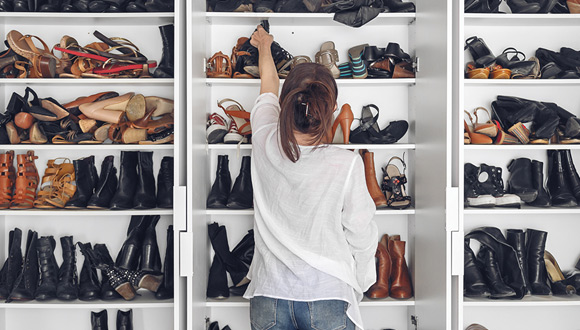3 Missteps to Avoid When It Comes to Your Everyday Shoes
July 13, 2021 - Katie McCallumFrom sneakers to pumps to flip-flops — footwear options can really vary. And good thing, too, since we sure do love our shoes.
So much so that somewhere around 75% of us regularly sacrifice function for fashion when it comes to what we wear on our feet. Cue the blisters, unsightly calluses, numb toes, foot pain and barely being able to walk by the end of the day.
(Not to mention how we often let brand loyalty decide our shoe choices, regardless of comfort. Nike vs. three stripes. Steve Madden vs. Kate Spade. Crocs vs. the world.)
Basically, we love our shoes to the point of making bad decisions.
But your footwear choices affect more than just your feet. They affect your whole body. Not to mention that ill-fitting and/or unsupportive shoewear choices can even lead to injury in some cases.
Finding the perfect shoe is tough, but being aware of common footwear mistakes can help you avoid making one. So — when you're ready — we're here to help you dive feet-first into everyday shoes that are actually comfortable.
Mistake #1: Your shoes don't fit and/or support your feet
The easiest mistake to make when it comes to shoes is to simply not listen to your feet when you first put the shoe on.
Maybe you ordered them online and don't want to go through the hassle of returning them. Or maybe you're making that conscious decision to choose fashion over function. Regardless of why you ignored the signs of an ill-fitting shoe, if it feels uncomfortable right away, be prepared for continued discomfort.
The theory that some shoes just need to be "broken in" is flawed since you can't know how long that's going to take. Your everyday shoes should be comfortable from the get-go.
To sidestep ill-fitting shoes, ask yourself the following questions:
- How's the fit? Sounds simple enough, but make sure the shoe is the right length and width for your foot. When your shoes are too big, your feet are more prone to sliding inside the shoe, compromising foot support. When you shoes are too small, your feet are compressed and can't take their natural form while moving.
- Does the shoe have a firm back? You can probably already see where this question is going...but a good shoe is one that has a firm back. Check this by grasping the back (if it even has one) and trying to move it side-to-side. If a shoe has no back, only a small strap or the back of the shoe moves during this process, heel support is comprised.
- How's the arch support? If you have a high arch, look for a shoe that has a lot of cushioning. If you have a low arch (or flat feet), look for a shoe that provides plenty of stability and motion control.
- Does the shoe bend with your toes? Your feet need traction as you walk and your toes are the primary way this is achieved. Be sure the shoe bends when your toes bend.
- Is there any give in the shoe? To allow your feet to seamlessly flex as you move, look for a shoe that some torque. This means you should be able to slightly twist the shoe while holding at both ends (heel and toe).
All of these questions can help you find a comfortable shoe that promotes the natural movement and biomechanics of your foot.
Mistake #2: Your shoe choice doesn't match your activity
Shoes come in all styles and shapes and, in some cases, there's a wrong time to wear certain types of shoes.
If you're standing all day, it's important to wear a shoe that not only fits well and provides support, but that also offers plenty of cushion. The same goes for the shoes you wear while walking or running, although there's quite a bit of nuance to choosing the right running shoe.
Additionally, here are some more tips:
- Sandals and flip-flops aren't appropriate if you're walking more than a short distance.
- High heels, pumps and stilettos are almost always cause for trouble, as they completely change your posture. If you're going to be doing any walking, consider wearing the lowest heel you have. Additionally, avoid wearing heels on uneven terrain.
- Boots often don't provide adequate foot support and therefore aren't recommended for anything more than short distance walking on even terrain.
Mistake #3: Your shoes are too old
It sounds obvious, but shoes have a limited lifespan. Fortunately, checking in on your shoe's "age" — which has more to do with mileage and how well the shoe has held up than it does time — is fairly simple.
If the heel has worn unevenly, it's time for new shoes. An angled heel can alter your step and gait and lead to pain. Additionally, if the integrity of the shoe's material or sole is compromised, you might be suffering from loss of support with each step.
And while tossing your favorite pair of shoes can feel almost painful to the soul, it could be the difference between pain-free steps and foot, leg and/or back pain.
Lastly, if you're someone who has a hard time finding comfortable shoes, buy a few pairs of the same shoe once you do actually find something that works for you. That way you can break out a brand new pair as soon as you wear out your current ones.


